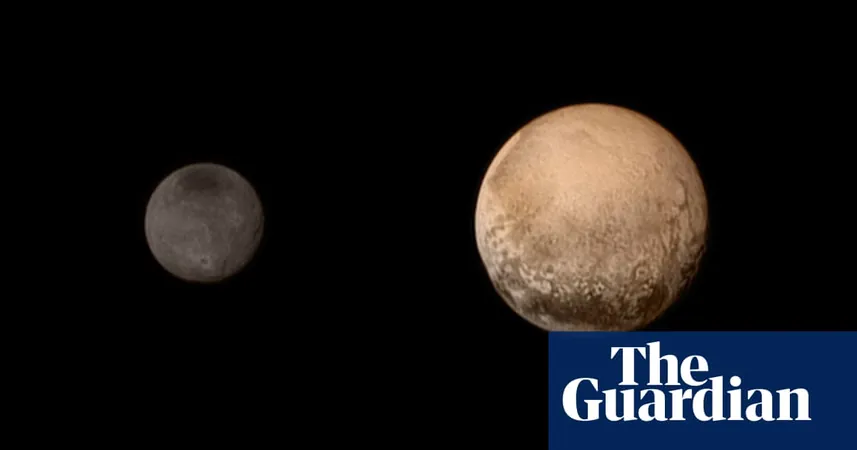
The Surprising Origin of Pluto's Largest Moon Charon: The 'Kiss and Capture' Theory Revealed!
2025-01-06
Author: Nur
The Surprising Origin of Pluto's Largest Moon Charon: The 'Kiss and Capture' Theory Revealed!
In a fascinating new twist in our understanding of cosmic relationships, scientists have proposed a captivating theory for the formation of Pluto's largest moon, Charon. While one might liken this story to a whimsical tale akin to those by Rudyard Kipling, it is firmly grounded in scientific exploration.
Pluto, once deemed the ninth planet in our solar system and now classified as a “dwarf planet,” boasts five known moons. Among them, Charon stands out with a diameter of approximately 754 miles, making it more than half the size of Pluto itself. Unlike Earth's moon, which orbits our planet, Pluto and Charon share a unique relationship: they orbit around a mutual center of gravity, residing in the far reaches of the Kuiper Belt beyond Neptune.
Researchers are now suggesting that the duo’s orbital dance is the result of a dramatic encounter dubbed the “kiss-and-capture” event. According to this hypothesis, Charon collided with Pluto, leading to a brief moment where both bodies spun together, resembling what the scientists describe as a "giant snowperson." Following this brief union, they separated, maintaining their distinctive identities while exchanging some material in the process.
Dr. Adeene Denton from the University of Arizona, the primary author of the study published in *Nature Geoscience*, explains, “Because Pluto rotates rapidly prior to the collision, and since Charon primarily lies outside their shared corotation zone, it is able to ‘push’ Charon away, resulting in its slow migration outwards.” This contrasts starkly with older theories suggesting that Charon formed as a direct result of a cataclysmic impact that deformed and reshaped both bodies, like blobs in a lava lamp.
The research team used advanced computer simulations that took into account the physical strength and composition of Pluto and Charon, factors that were often disregarded in past studies focused on massive bodies like galaxies and giant planets. The new findings indicate that since Pluto and Charon are composed of rock and ice, their collision dynamics behave more like solid materials under stress rather than fluid masses.
Moreover, the aftermath of the impact possibly influenced the geological evolution of both Pluto and Charon. "The impact introduces substantial heat into Pluto, and as Charon begins to drift away, further heating could initiate a new geologic era, ultimately leading to the surfaces revealed by NASA's New Horizons spacecraft in 2015,” Dr. Denton added.
Intriguingly, this ‘kiss-and-capture’ mechanism may not just apply to Pluto and Charon. Denton notes that approximately eight out of ten largest objects in the Kuiper Belt have large satellites similar to Charon, suggesting that such events may have been a common occurrence during the solar system’s formation.
As we continue to unravel the mysteries of our solar system, this new theory not only sheds light on the origins of Pluto's moons but also hints at the dynamic interactions that have shaped celestial bodies across the cosmos! Stay tuned for further discoveries as scientists delve deeper into the secrets of our universe.

 Brasil (PT)
Brasil (PT)
 Canada (EN)
Canada (EN)
 Chile (ES)
Chile (ES)
 Česko (CS)
Česko (CS)
 대한민국 (KO)
대한민국 (KO)
 España (ES)
España (ES)
 France (FR)
France (FR)
 Hong Kong (EN)
Hong Kong (EN)
 Italia (IT)
Italia (IT)
 日本 (JA)
日本 (JA)
 Magyarország (HU)
Magyarország (HU)
 Norge (NO)
Norge (NO)
 Polska (PL)
Polska (PL)
 Schweiz (DE)
Schweiz (DE)
 Singapore (EN)
Singapore (EN)
 Sverige (SV)
Sverige (SV)
 Suomi (FI)
Suomi (FI)
 Türkiye (TR)
Türkiye (TR)
 الإمارات العربية المتحدة (AR)
الإمارات العربية المتحدة (AR)